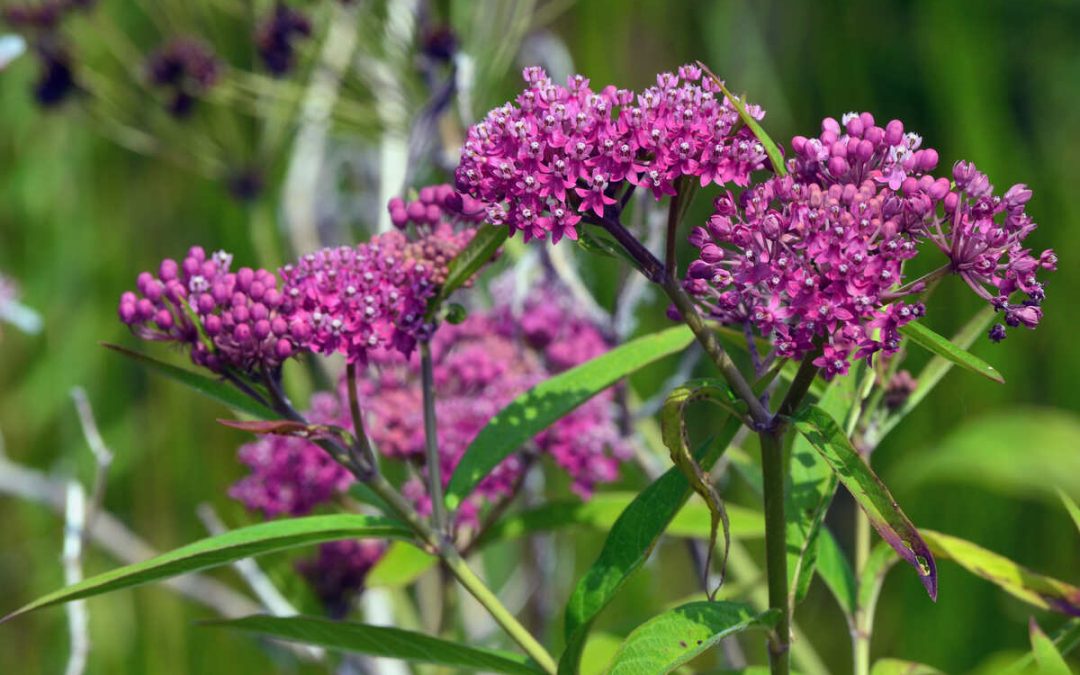There’s a lot more to Detroit than just Comerica Park, the Eastern Market, and Mototown. From the Riverwalk to Belle Isle, the Motor City is also home to an amazing array of native plants that can add a touch of Michigan’s natural beauty to your yard. To help you incorporate them into your landscape design, we’ve compiled a list of the best native plants for Detroit lawns.
These native trees and plants won’t only improve the appearance of your yard but also come with a range of additional benefits:
- They are adapted to the local climate and soil conditions, which means they require less water and fertilizer and are less susceptible to diseases and pests.
- They thrive in Detroit’s unpredictable weather conditions. They can endure the harsh winters and humid summers of the region without the need for extra maintenance.
- They help to restore the natural habitat of local wildlife, including birds, butterflies, and other pollinators.
Whether you prefer showy wildflowers, elegant trees, or a mix of both, these 10 best native plants for Detroit are sure to enhance your outdoor space and bring you closer to the natural beauty of the city.
Here’s what we’ll cover:
- 10 Native Plants for Your Detroit Yard
- How to Choose Native Plants for Your Detroit Landscape
- FAQ About Native Detroit Plants
- Where to Find Native Plants in Detroit
10 Native Plants for Your Detroit Yard
1. Yellow Coneflower (Ratibida pinnata)
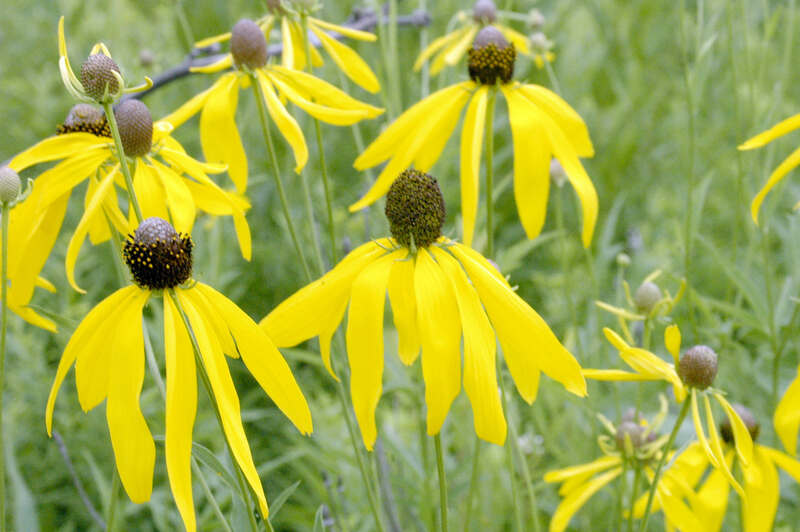
Photo Credit: Frank Mayfield / Flickr / CC BY-SA 2.0
As a member of the sunflower family, the yellow coneflower produces beautiful, bright yellow flowers that bloom from mid-June to September, providing a long-lasting burst of color in your garden. While it can endure some degree of light shade, it requires full sun conditions to thrive – so it’s not the best choice for heavily shaded yards.
Yellow coneflower is also low-maintenance and resistant to many common plant pets, such as Lygus bugs, leafhoppers, aphids, and Japanese beetles. Plus, it’s a pollinator magnet, so you’ll be doing your part to support Detroit’s wildlife by planting it in your yard.
Plant type: Flower
USDA Hardiness Zone: 3 to 9
Sun: Full sun to partial shade
Soil: Mid-range soil moist; it can thrive in various soil types, including clay, sandy, and calcareous.
Duration: Perennial
Fragrance: Light, sweet smelling
Bloom time: Mid-Season (June to August)
Water needs: Medium
Mature height: 3 to 5 feet
Maintenance: Low. If it grows tall stems, these may require support. To encourage new growth, prune back 1 to 2 inches above the ground during early to mid-spring.
2. Common Boneset (Eupatorium perfoliatum)
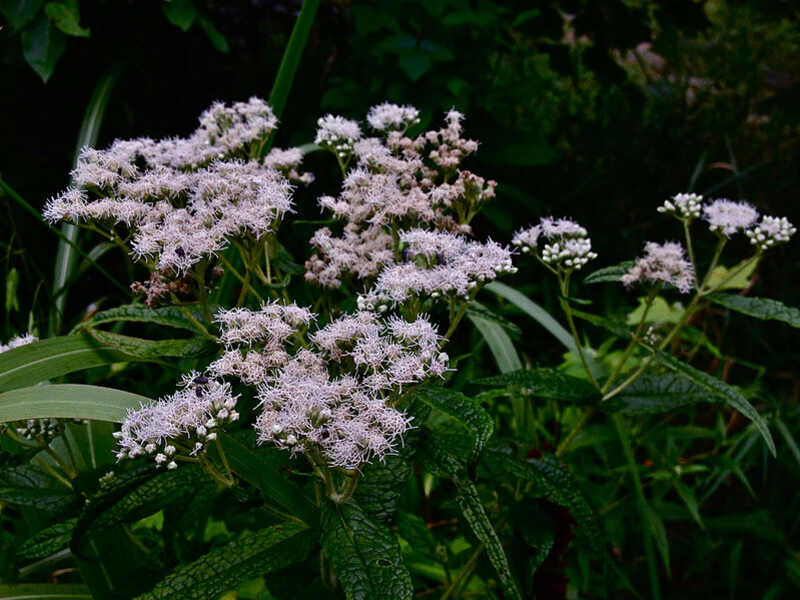
Photo Credit: Fritzflohrreynolds / Wikimedia Commons / CC BY-SA 3.0
Common boneset is a versatile and attractive plant that can bring both aesthetic and practical benefits to your yard. This plant is known for its Detroit’s winter hardiness, beautiful clusters of small, white flowers that bloom in late summer and fall, and its medicinal properties.
It can tolerate a range of soil conditions, from dry to moist, and it will reach around 3 to 4 feet tall under full sun conditions. Now, keep in mind that common boneset spreads via underground rhizomes. As a result, it’s best to avoid planting it in the same flower bed as other Detroit native plants.
Plant type: Flower
USDA Hardiness Zone: 3 to 9
Sun: Full sun to partial shade
Soil: Organic-rich moist to wet sandy or clay soils; though it can also tolerate dry soils.
Duration: Perennial
Fragrance: Sweet, floral scent
Bloom time: Late summer to early fall
Water needs: High
Mature height: 3 to 5 feet
Maintenance: Medium. To shield the roots from the harsh effects of Detroit’s deep winter freezes, it’s recommended to apply a three-inch layer of mulch.
3. Swamp Milkweed (Asclepias incarnate)
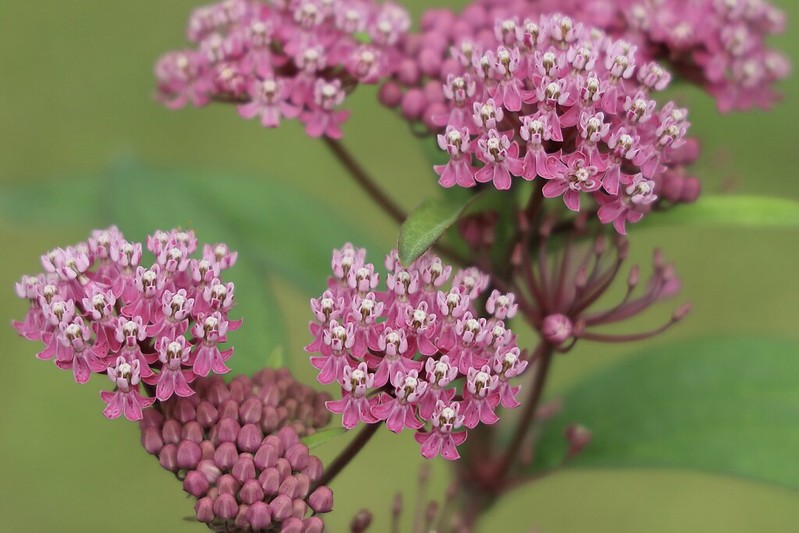
Photo Credit: Lydia Fravel / Flickr / CC BY 2.0
As a wetland species, swamp milkweed is commonly found along the edges of streams and rivers, wet meadows, and swamps. In fact, if you like to spend time outdoors around Detroit’s great lakes and rivers, you’re probably already familiar with it. The plant produces clusters of pink or purple flowers that are attractive to pollinators like butterflies and bees, and it serves as a host plant for the caterpillars of the Monarch butterfly.
This species prefers full sun or partial shade, and it’s adaptable to a variety of soil types, including clay, loam, and sand. It’s also a good idea to plant it somewhere that’s well-drained, because although it needs moist soil, it doesn’t like to sit in flooded areas.
Plant type: Flower
USDA Hardiness Zone: 3 to 9
Sun: Full sun to partial shade
Soil: Organically rich, slightly acidic, well-drained soil
Duration: Perennial
Fragrance: Sweet smelling
Bloom time: Midsummer to fall
Water needs: High
Mature height: 4 to 6 feet
Potential hazards: Poisonous to humans and animals in large quantities
Maintenance: Low
4. Black-Eyed Susan (Rudbeckia hirta)
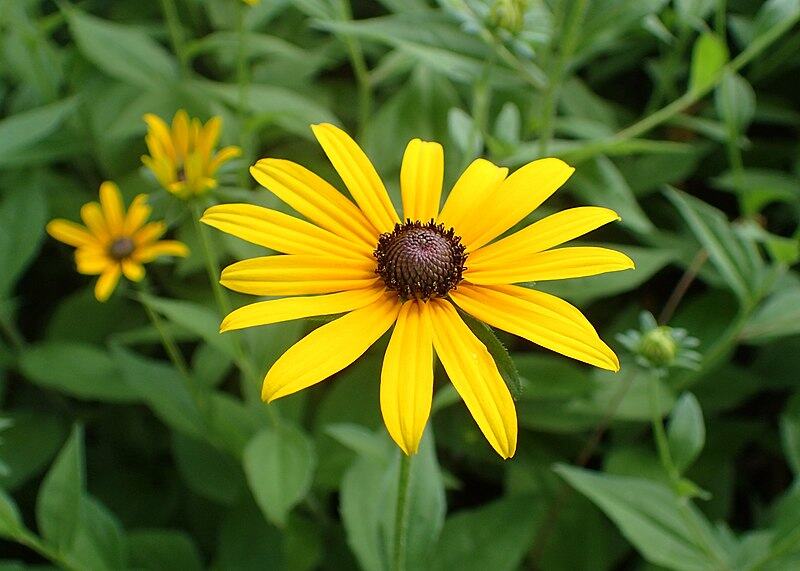
Photo Credit: Krzysztof Ziarnek, Kenraiz / Wikimedia Commons / CC BY-SA 4.0
Black-eyed Susan is known for its cheerful yellow petals and dark center. It can grow up to 3 feet tall and thrive in various conditions, whether it’s full sun or partial shade, dry or moist soil – this plant will adapt and flourish.
Additionally, black-eyed Susan is a practical choice for erosion control and stabilization. Its deep root system helps to hold soil in place, preventing it from being washed away during heavy rain or wind. This means that if your lawn is already damaged or sloped, black-eyed Susan can help stabilize the soil and prevent further erosion.
Plant type: Flower
USDA Hardiness Zone: 3 to 9
Sun: Full sun. Can tolerate some partial shade
Soil: Dry, moist, well drained soils.
Duration: Annual , Perennial, or Biennial depending on growing conditions
Fragrance: Sweet
Bloom time: Early summer to early fall (Jun – Sept)
Water needs: Medium
Mature height: 1 to 3 feet
Maintenance: Low. During its first season, it should be irrigated with only one inch of water per week – once established, it’ll be drought-resistant.
5. Butterfly Weed (Asclepias tuberosa)
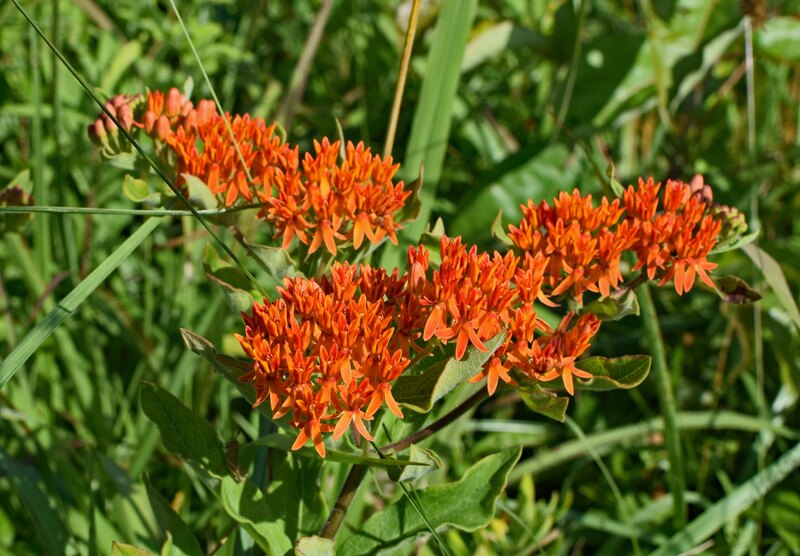
Photo Credit: PxFuel
Butterfly weed gets its name from its ability to attract a wide variety of butterflies, including monarchs, swallowtails, and fritillaries. These butterflies are drawn to its bright orange and yellow flowers, which provide a rich source of nectar. It’s also a hardy and easy-to-grow plant. It prefers full sun and well-drained soil, but it can also grow in partial shade and tolerate drought once established.
Now, butterfly weed is not for impatient gardeners. If you choose to grow it from seed, it can take up to two years to bloom. Besides, it’s prone to aphids. You can control them through natural methods such as spraying the plants with a strong stream of water or applying insecticidal soap. Ladybugs and lacewings are also natural predators of aphids and can help keep their populations in check.
Plant type: Perennial herb
USDA Hardiness Zone: 3 to 9
Sun: Full sun to partial shade
Soil: Well-drained dry to mid-range soil moist. Loam, sand, or clay
Duration: Perennial
Fragrance: Sweet vanilla fragrance
Bloom time: May – September
Water needs: Low
Mature height: 2 to 3 feet
Potential hazards: Poisonous to humans and pets
Maintenance: Low
6. Trembling Aspen (Populus tremuloides)
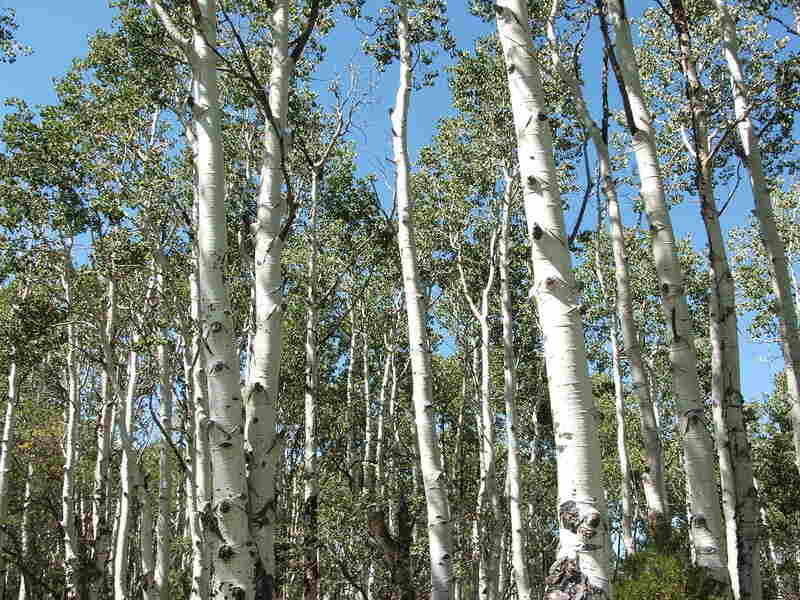
Photo Credit: Tewy / Wikimedia Commons / CC BY-SA 3.0
Trembling aspen (aka quaking aspen) is known for its striking white bark and shimmering leaves that flutter in the breeze, giving it its common name. This tree is a fast grower, reaching heights of up to 60 feet – way taller than the Spirit of Detroit statue! To get there, though, you’ll need to maintain it frequently. It requires at least four hours of daily sunlight as well as generous watering and fertilization.
One potential issue to be aware of when growing trembling aspen is its susceptibility to insect pests such as tent caterpillars and aspen leaf miners. These pests can cause defoliation and damage to the tree. You can control them using natural pesticides or by encouraging natural predators such as birds and parasitic wasps.
Plant type: Tree
USDA Hardiness Zone: 1 to 6
Sun: Full sun to partial shade
Soil: Dry to mid-range, organic-rich, well-drained soil moist
Duration: Perennial
Bloom time: April – May
Water needs: Medium
Mature height: 20 to 60 feet
Maintenance: High
7. New England Aster (Symphyotrichum novae-angliae)
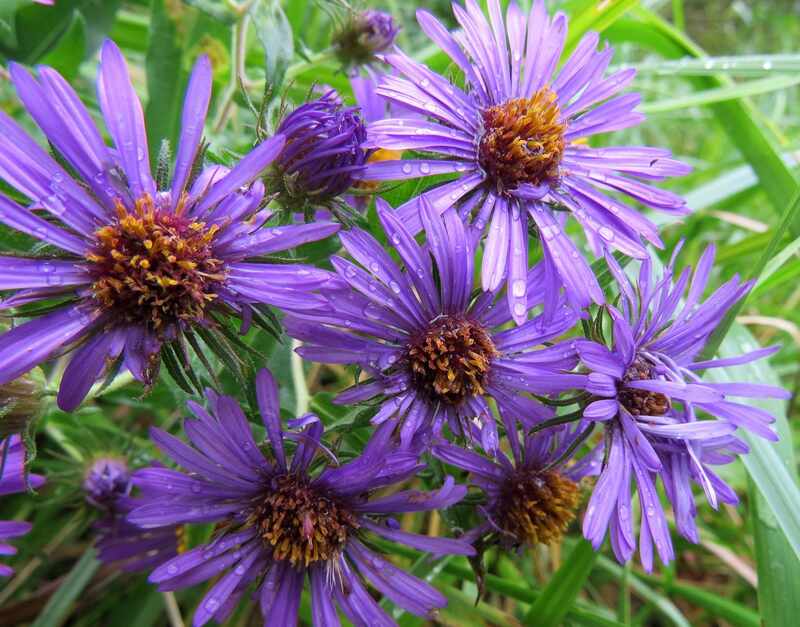
Photo Credit: USFWS Midwest Region / Flickr / Public Domain
New England aster is a tall, elegant plant that produces masses of purple flowers in late summer and fall, providing a burst of color to your garden when many other plants are slowing down. It can grow in a variety of soil types, including clay, loam, and sand, and prefers slightly acidic pH levels.
While it can tolerate partial or light shade, this plant needs at least six to eight hours of daily sunlight to thrive. Detroit’s humidity during the summer can become an issue if you don’t provide adequate air circulation around your New England aster plants. To prevent fungal diseases, make sure to space them out properly.
Plant type: Flower
USDA Hardiness Zone: 4 to 8
Sun: Full sun to partial shade
Soil: Clay, sandy, loamy
Duration: Perennial
Bloom time: Late summer – early fall
Water needs: Medium
Mature height: 3 to 6 feet
Maintenance: Medium
8. Ninebark (Physocarpus opulifolius)
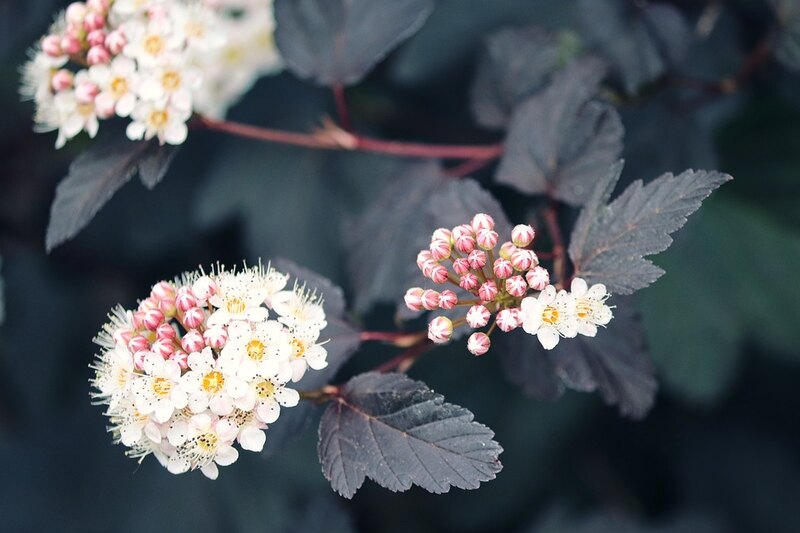
Photo Credit: Pixabay
Ninebark’s dense growth and multi-stemmed habit make it an excellent choice for creating a living privacy screen around your garden beds or lawn. This shrub is known for its striking bark, which peels away in layers to reveal a range of colors including red, brown, and orange. In addition to its attractive bark, ninebark produces clusters of small white or pink flowers in the spring and summer, which are followed by red or brown fruit in the fall.
One of the great things about ninebark is that it is a low-maintenance plant that requires little pruning or special care. However, if you want to keep the plant looking its best, you can prune it in the early spring to remove any dead or damaged branches and shape the plant as desired.
Plant type: Shrub
USDA Hardiness Zone: 2 to 8
Sun: Full sun to partial shade
Soil: Dry to moist clay and loam soils
Duration: Perennial
Bloom time: Late spring to early summer (May – Jun)
Water needs: Low to Medium
Mature height: 5 to 8 feet
Maintenance: Low
9. Virgin’s Bower (Clematis virginiana)
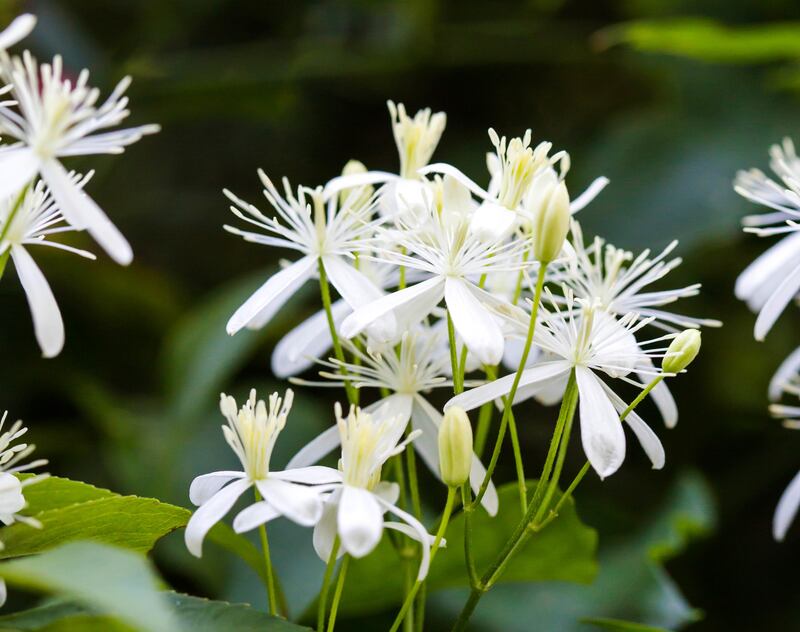
Photo Credit: Melissa McMasters / Flickr / CC BY 2.0
Virgin’s Bower (also known as woodbine, the devil’s darning needles, and old man’s beard) is a vigorous climber that can grow up to 20 feet tall, making it perfect for covering a trellis, fence, or other vertical structure in your yard. This plant prefers well-draining soils that are moist but not waterlogged and produces feathery seed heads that persist into the winter months.
Just a heads up, though: Virgin’s Bower can be quite the go-getter. It spreads quickly by self-seeding and can take over other plants if not managed properly. So, if you want to keep it in check, be sure to prune it back in the spring and keep it away from delicate plants.
Plant type: Vine
USDA Hardiness Zone: 3 to 8
Sun: Partial sun
Soil: Organic-rich, well-drained loamy or silty soil
Duration: Perennial
Fragrance: Sweet smelling
Bloom time: July – September
Water needs: Medium to High
Mature height: 12 to 20 feet
Potential hazards: Poisonous to humans and animals
Maintenance: Medium
10. Little Bluestem (Schizachyrium scoparium)

Photo Credit: Alexschott / Wikimedia Commons / CC BY-SA 3.0
Little bluestem is a warm-season grass that typically blooms in mid to late summer, producing fluffy seed heads that persist into the winter months. The plant’s foliage is a gorgeous blue-green color in the summer, turning to shades of orange, red, and bronze in the fall – it’s like having a mini autumn in your garden!
Another great thing about little bluestem is that it’s low-maintenance. It’s drought-tolerant and can adapt to a wide range of soil types, making it a great choice for Detroit’s climate. Plus, it’s deer-resistant, so you won’t have to worry about pesky critters munching on your plants.
Plant type: Ornamental grass
USDA Hardiness Zone: 3 to 9
Sun: Full sun
Soil: Dry to moist, well-drained soils
Duration: Perennial
Bloom time: August – February
Water needs: Low
Mature height: 2 to 4 feet
Maintenance: Low
How to Choose Native Plants for Your Detroit Yard
Before picking a native plant, the first thing you should do is take a look at your yard and think carefully about its conditions. Is it sunny or shady? Is the soil sandy or clay-based? Are there any areas that are particularly wet or dry? Choose plants that are well-suited to your yard’s conditions to ensure their success.
Another thing to consider is maintenance. Native plants are generally low-maintenance, but it’s still important to think about your ability to care for them. Choose plants that fit your time and energy level, and consider factors like pruning and watering requirements.
Although we highly recommend the native plants mentioned earlier, there are many other options available (native and non-native) that might better align with your preferences. Detroit falls under USDA hardiness zone 6b, indicating that the region’s average minimum temperature ranges from -5 to 0 degrees Fahrenheit. When exploring alternative plants, make sure that they are suitable for the hardiness zone of Detroit.
FAQ About Native Detroit Plants
Detroit’s winters can be quite challenging, with temperatures often dropping below freezing and heavy snowfall. That’s why, generally, the ideal time to plant is in the spring or early fall, when the weather is cooler and there is more moisture in the soil.
Most Detroit native plants thrive in slightly acidic to neutral soil with a pH range of 6.0 to 7.0. However, make sure you research the specific pH needs of your chosen native plants before planting them in your garden. If you don’t, it can lead to stunted growth, nutrient deficiencies, and even plant death.
In Michigan, it’s illegal to collect certain native species, such as club mosses and all trillium species. These plants play an important role in local ecosystems and are protected to ensure their survival. Additionally, there are some endangered native plants that you’ll want to avoid collecting to help preserve their populations.
Where to Find Native Plants in Detroit
If you’re a fan of walking along the Detroit Riverfront or taking a trip to Belle Isle Park, you’ve probably already seen most of these plants. These sites boast several native flowers, including Black-eyed Susans, New England asters, and yellow coneflowers.
But if you want to bring some of that natural beauty into your own yard, you can check your locally-owned and operated nurseries to see whether they have Michigan native plants in stock. These are some recommended options:
Filling your garden with native plants is a great starting point to create your dream outdoor space. However, if you don’t take care of the other aspects of your landscape, your natural oasis won’t reach its full potential. Leave the lawn care to the experts and connect with a local pro to achieve your landscaping goals.
Main Image Credit: Swamp Milkweed at Detroit River International Wildlife Refuge / USFWS Midwest Region / Flickr / Public Domain

